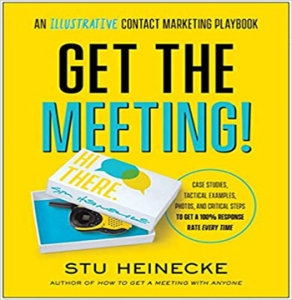Personalizing Blog Content – on Both Ends
We need to update the definition of the word “personalize”, Stu Heinecke insists in his book Get the Meeting. Why? To differentiate between the two forms “wide” and “deep”. Wide personalization, Heinecke explains, applies readily available data across an audience, while deep personalization applies individualized research findings to produce unique outreach elements, one by one.
Can blogging do both?
Personalizing on the audience end:
At Say It For You, I teach that everything about your blog should be tailor-made for that customer – the words you use, how technical you get, how sophisticated your approach, the title of each blog entry – all of it. And since we content writers are hired by clients to tell their story online to their target audiences, we need to do intensive research, as well as take guidance from the business owner’s or practitioner’s experience and expertise.
Now, since blogging is part of inbound marketing, it cannot involve researching each individual’s hobbies and preferences, creating and shipping unique gifts in order to “get the meeting”.
On the other hand, as Mo the Blog Coach explains, having an abstract audience in mind when creating content is ineffective, causing you to ramble on, trying to help ALL the people. Instead, she advises, “humanize your reader, singling them down to one specific person experiencing one specific problem.
Personalizing on the blog marketer’s end with I-you language:
In blog marketing, I stress first person writing because of its one enormous advantage – it shows the people behind the posts, revealing the personality of the person or the team standing ready to serve customers.
It was apparent the editors of Flea Market Home & Living magazine had latched onto this exact secret. Each page featured a designer – or homeowner – statement beginning in first person:
- “I make things out of what most folks consider garbage and get an inordinate amount of pleasure from it.”
- “I try not to follow any rules. I really try not to copy anyone and I try to avoid trends.”
- “I believe your sense of color is like a muscle that needs to e exercised.”
- “I feel good supporting the local Goodwill. Plus, with the money I save, I feel better about the occasional splurge.”
In blog marketing, customers might be asked for statements like these – sharing stories of unique ways they used your product or service, or describing a problem you helped them solve. On marketers’ end, “I” and “we” statements give readers the feeling that the providers of the services and products are speaking directly to them. In fact, in business blogging, one goal should be to present the business or practice as very personal rather than merely transactional, reminding readers that there are real life humans behind the content on the website.
Blog content with the greatest chance of success is personalized on both ends!


Leave a Reply
Want to join the discussion?Feel free to contribute!